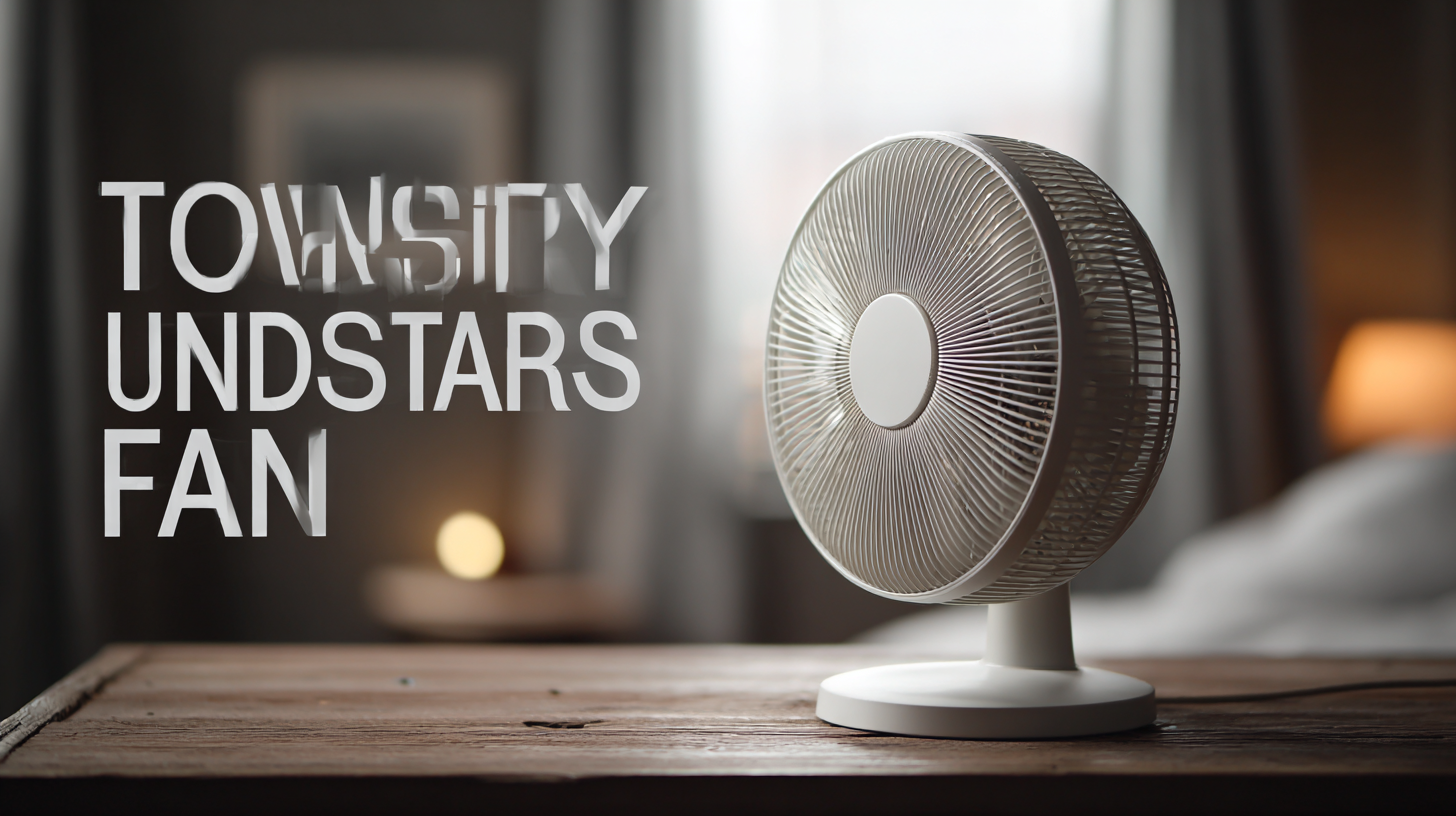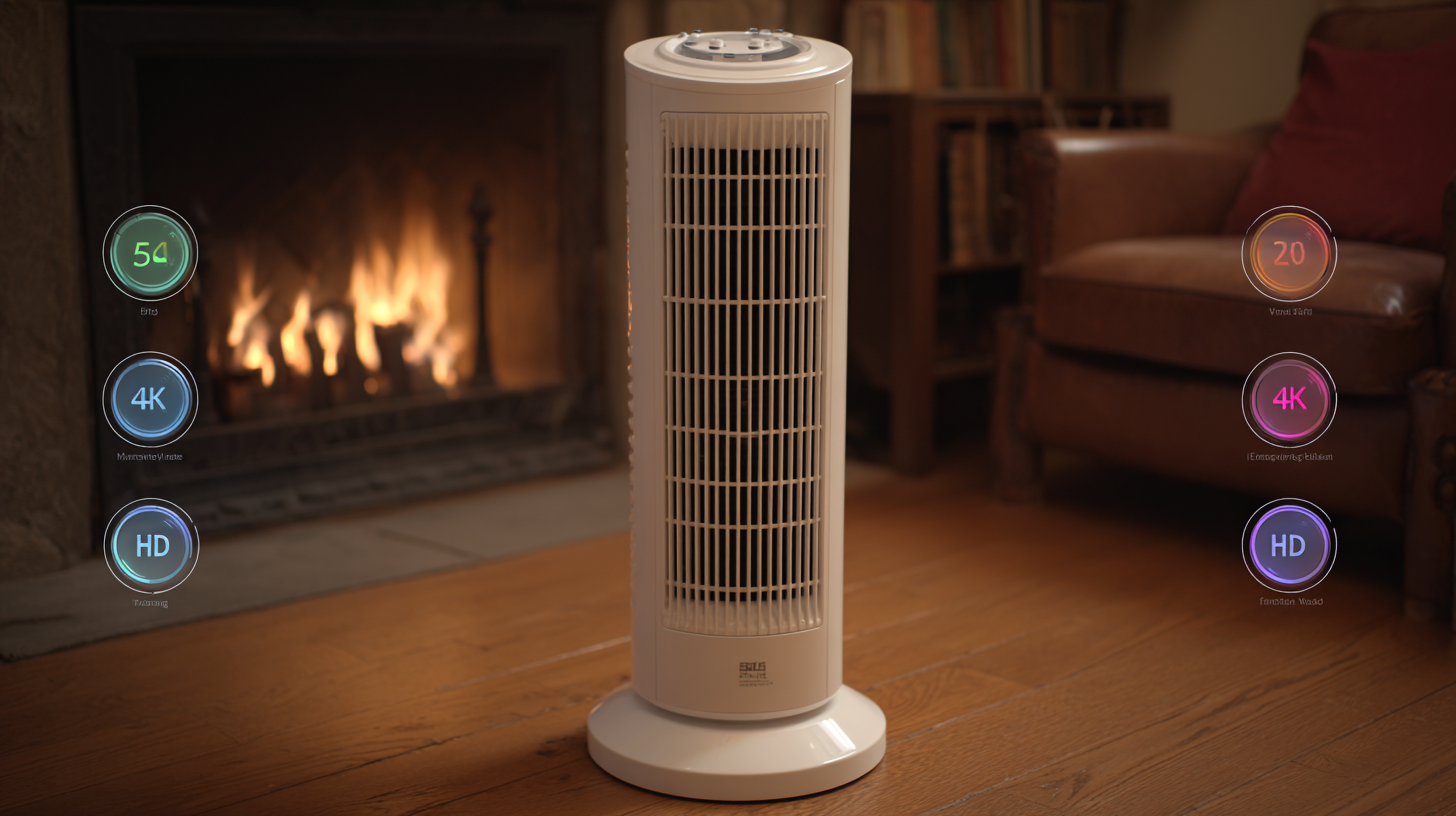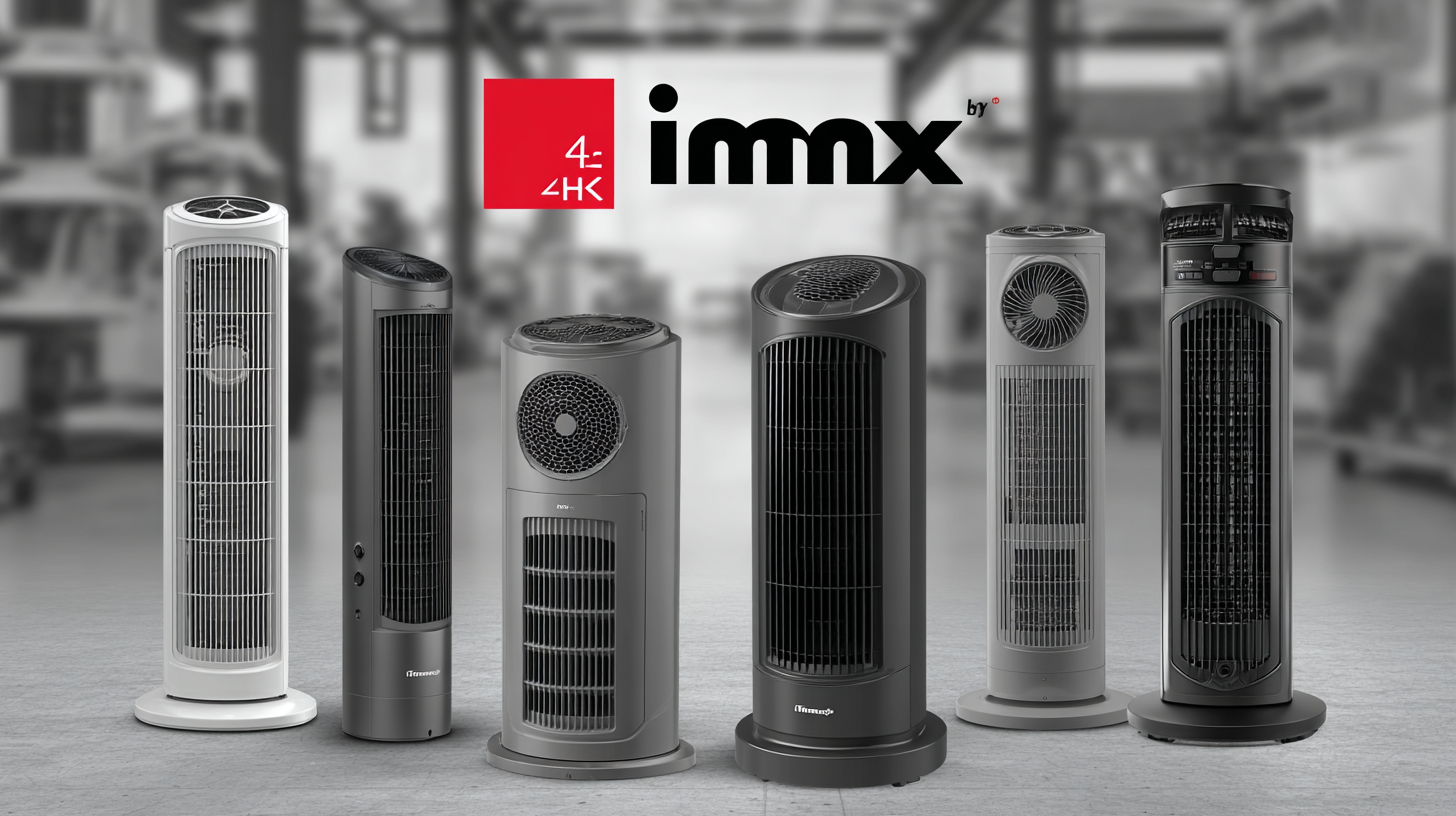
Understanding Industry Standards for the Best Tower Fan and How to Choose the Right One
In recent years, the popularity of tower fans has surged as consumers seek efficient and stylish cooling solutions for their homes and offices. According to the Global Market Insights report, the tower fan market is projected to reach $2 billion by 2027, reflecting a growing preference for space-saving designs that offer powerful airflow.

With advancements in technology, today's tower fans not only provide significant cooling capabilities but also come equipped with features like remote control, energy-saving modes, and air purification functions. However, navigating the myriad options available can be daunting, as industry standards for performance, noise levels, and energy efficiency vary widely among different brands and models.
This blog aims to demystify the key standards that define the best tower fans on the market and provide actionable guidance on how to select the right one that meets your specific needs.
Key Features to Look for in a High-Quality Tower Fan
When selecting a high-quality tower fan, several key features should be taken into account. One of the most critical aspects is the fan's airflow capacity, often measured in CFM (cubic feet per minute). According to a recent report by the American Society of Heating, Refrigerating and Air-Conditioning Engineers (ASHRAE), a tower fan that provides a CFM rating of 300 to 700 is ideal for effectively circulating air in medium to large rooms. This ensures not only comfort but also enhances energy efficiency during warmer months.
Another essential feature is noise level, with most consumers preferring fans that operate quietly. A study from Consumer Reports highlights that the optimal sound level for residential use is below 50 dB, allowing for peaceful environments in both day and nighttime settings. Additionally, features such as oscillation, remote control, and programmable timers can significantly enhance a fan's usability and convenience. As per market analysis by Statista, an increasing number of consumers are prioritizing these functionalities, indicating a trend towards smarter, more user-friendly cooling solutions in modern households.

Understanding Energy Efficiency Ratings and Their Importance
When selecting the best tower fan, understanding energy efficiency ratings is crucial. These ratings give consumers insight into how much energy a fan uses to operate effectively. Tower fans are often rated using the Energy Efficiency Ratio (EER) or Energy Star certification, which indicates their ability to provide cooling while minimizing energy consumption. A higher EER typically suggests a more efficient appliance, which can lead to lower electricity bills and a reduced carbon footprint.
In addition to immediate cost savings, energy-efficient tower fans contribute to long-term sustainability. As many households seek to reduce their environmental impact, opting for fans with reliable energy efficiency ratings becomes increasingly important. Consumers should prioritize fans that meet or exceed the Energy Star standards, as these appliances not only provide optimal airflow but also utilize advanced technology to maximize performance while conserving energy. Understanding and choosing an energy-efficient tower fan is essential in today’s eco-conscious market, allowing for comfort without compromising environmental responsibility.
Best Brands and Models Based on Industry Standards
When it comes to selecting a tower fan, understanding the best brands and models based on industry standards is crucial. Reputable brands such as Dyson, Lasko, and Honeywell have set the benchmark in fan technology. Dyson’s sleek design and advanced airflow technology make it a top choice for those prioritizing aesthetics and performance. Lasko offers reliability and value, while Honeywell is known for its energy-efficient models that deliver effective cooling without breaking the bank.
When evaluating these brands, consider essential features such as noise levels, oscillation, and energy efficiency. For instance, if you’re sensitive to sound, look for models with a “whisper-quiet” setting. Additionally, an oscillating fan can greatly enhance air circulation, distributing cool air evenly throughout your space.
Another tip is to check for user reviews and professional ratings to gauge real-world performance. Features like remote control operation and programmable timers add convenience, making your selection process much easier. Always ensure that the model you choose meets safety standards, as this guarantees durability and reliable operation in your home.
Understanding Industry Standards for the Best Tower Fan
| Model | Airflow (CFM) | Noise Level (dB) | Power Consumption (W) | Type |
|---|---|---|---|---|
| Model A | 300 | 50 | 60 | Oscillating |
| Model B | 340 | 45 | 55 | Tower |
| Model C | 280 | 55 | 50 | Pedestal |
| Model D | 320 | 52 | 65 | Hybrid |
Tips for Choosing the Right Size and Design for Your Space
When selecting a tower fan for your space, size and design play vital roles in ensuring optimal comfort and aesthetic appeal. A well-sized fan can effectively circulate air without overwhelming your living area. To determine the right dimensions, consider the size of the room and the height of your ceilings. For smaller rooms, a compact model can provide sufficient airflow without occupying too much space, while larger areas may benefit from taller fans that have a wider distribution range.
In terms of design, the fan should complement your interior style. Opt for a sleek, modern design if your decor leans contemporary; alternatively, a classic or rustic look can enhance a traditional setting. Additionally, color and texture matter. Matching the fan's finish with existing furniture or wall colors can unify the room’s aesthetic. Remember also to consider the noise level of the fan, especially for areas where tranquility is essential, such as bedrooms or offices. Embrace these tips to find a tower fan that not only cools your space effectively but also enhances its overall design.
Understanding Industry Standards for Tower Fans
Maintaining Your Tower Fan for Optimal Performance and Longevity
Maintaining your tower fan is essential for ensuring optimal performance and prolonging its lifespan. Regular cleaning is a crucial step in this maintenance process. Dust and debris can accumulate on the fan blades and in the grille, which can hinder airflow and reduce efficiency. To clean your tower fan, first, unplug it, then use a soft cloth or a vacuum attachment to remove dust from the exterior. For more thorough cleaning, carefully disassemble the front grille to access the blades. A gentle wipe with a damp cloth will keep the fan operating smoothly.

In addition to cleaning, it's important to check the fan’s settings and functions periodically. Ensure that all features, such as oscillation and speed settings, are working properly. If your fan has a built-in timer or remote control, test these functions as well. Regularly inspecting the cord for frays and ensuring that the fan is placed on a stable surface can help prevent accidents and enhance safety. By following these maintenance tips, your tower fan will not only perform at its best but also last for many seasons to come.

